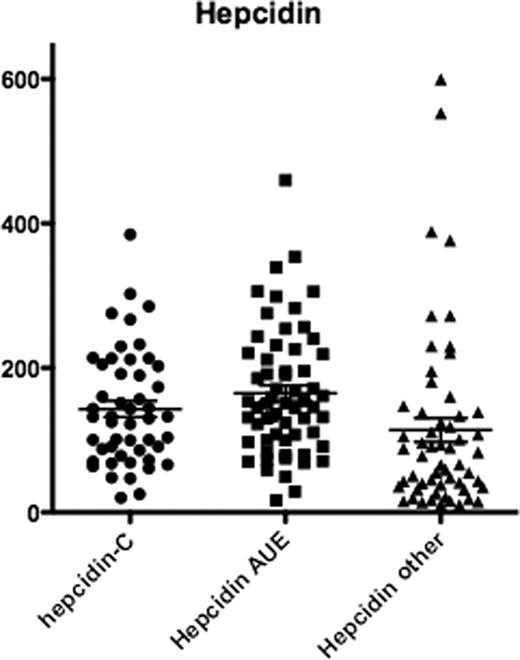Abstract
Abstract 2037
Several epidemiologic studies have documented an increasing frequency of anemia in individuals 65 years and older. Elderly individuals with anemia have been categorized into those with chronic disease, those with iron, B12, or folate deficiency, and those with ’unexplained anemia’ –with roughly 1/3 of cases assigned to each category based upon laboratory data and clinical history. Unexplained anemia (AUE—or anemia of unknown etiology) remains a diagnosis of exclusion. The heterogeneity or homogeneity of this population will become clear with identification of cause(s) of anemia, and development of specific screening tests that are characteristic of some or all individuals assigned to this group. There is considerable interest and debate as to whether AUE has an inflammatory component, represents early presentation of marrow dysfunction such as myelodysplasia, is a manifestation of cellular aging such as telomere shortening or mitochondrial dysfunction, or represents a novel pathologic process. Here we compare a large cohort (167 patients) of AUE cases with a matched, non-anemic control group (170 patients), and a group of age-matched individuals with anemia of defined cause (144 patients divided as follows: 77 iron deficiency, 34 kidney disease, 24 elevated white cell count, 10 alcohol abuse). Patient plasma was assayed for IL-6, hepcidin, GDF-15, erythropoietin (Epo) and testosterone (males only). IL-6 levels did not differ between the AUE and the control groups. Similarly, hepcidin levels (see figure below) were not elevated in the AUE versus control group comparison. Interestingly, GDF-15 levels were significantly elevated when comparing AUE to controls. GDF-15 levels in the defined anemia groups varied—with no change in the iron deficiency group, but marked elevation in patients with kidney disease. Epo levels strongly discriminated between the iron deficiency and control groups, but only weakly discriminated the AUE and control groups. Correlation analysis between hemoglobin levels and Epo expression confirm this blunted response in the AUE group. Correlation analysis also revealed a consistent and significant positive relationship between Epo and GDF-15 expression across multiple groups, but no consistent relationship between GDF-15 and hepcidin expression. Testosterone level in males was not significantly different in any comparison. However, there were differences observed between sexes in this analysis, particularly in expression of GDF-15. In summary, our results indicate that that neither inflammation nor iron-restriction (as seen in anemia of chronic disease due to elevated hepcidin) play significant roles in development of anemia in the AUE cohort. GDF-15 levels, on the other hand, may be a useful discriminator. We are currently using a clustering approach to determine whether the AUE group can be further subdivided based upon patterns of expression of these analytes along with additional clinical and laboratory data available on this cohort.
Plasma Hepcidin Levels in Control (C), AUE and Other Anemia groups. Differences between control and AUE group were not significant.
Plasma Hepcidin Levels in Control (C), AUE and Other Anemia groups. Differences between control and AUE group were not significant.
No relevant conflicts of interest to declare.
Author notes
Asterisk with author names denotes non-ASH members.


